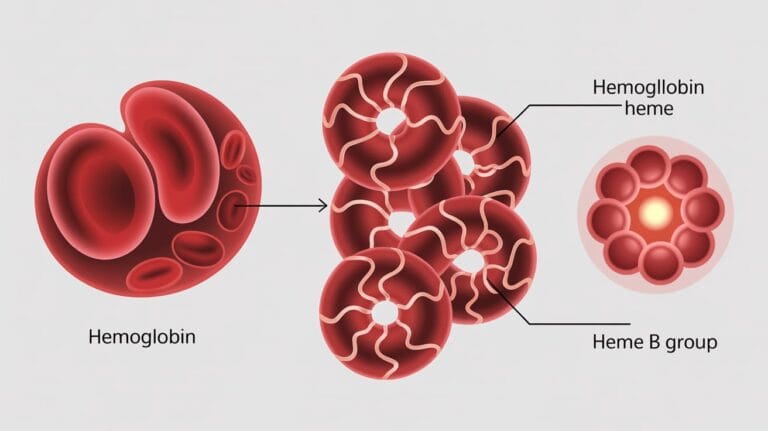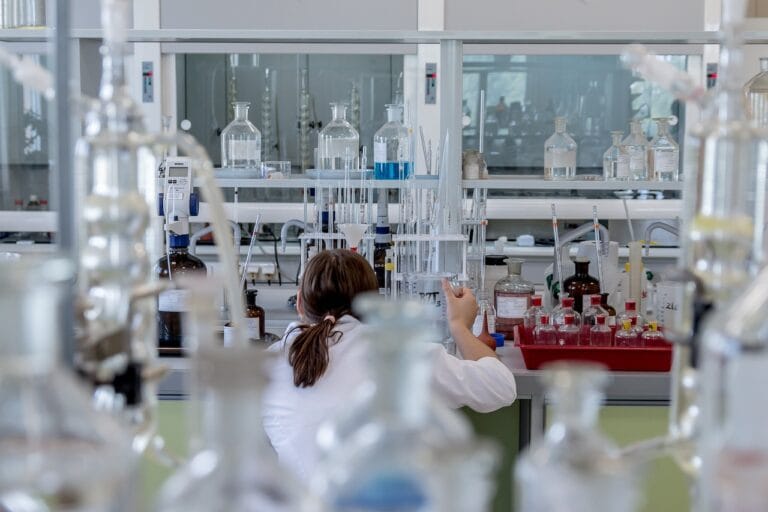Polysaccharides:
Carbohydrates are composed of ten or more monosaccharides units held together by glycosidic bond is called polysaccharides. These are colloidal in size. It is known as “glycans” .These are classified in two groups
- Homo polysaccharides.
- Hetero polysaccharides.
Homo polysaccharides:
These polysaccharides is made up of several units of one and same type of monosaccharides unit only
OR
Homo polysaccharides on hydrolysis give only same type of monosaccharides.eg. glucans are polymers of glucose and fructosans are polymers of fructose. It is known as homoglycans. Starch, dextrin glycogen, cellulose and inulin are the type of homo polysaccharides.
Starch :
It is the storage form of glucose in plants. It is a homo polymer composed of D-glucose units held by α glycosidic bond known as glycosan or glycan. It’s consist of two components amylose and amylopectin.
Amylose:
Amylose is linear polymer of D-glucose units joined by α (1→4) glycosidic linkages.

Amylopectin:
Amylopectin is a linear and branched polymer of D-glucose held by α (1→4) and α (1→6) glycosidic linkages.

Dextrin:
Partial hydrolysis of starch by acids or α-amylase(enzyme)produces substances known as dextrins. these are all occur in honey. All dextrins have a few free aldehyde groups and can show mild reducing property. They are not fermented by yeast, e.g. erythrodextrin and amylodextrin.
Glycogen:
It is the storage form of glucose in animals, found mostly in liver and muscle. The structure of glycogen is similar to that of amylopectin ,except it is more highly branched.
Function of glycogen:
- Glycogen is the source of energy for muscle.
- liver glycogen is concerned with storage and maintenance of blood glucose.
Cellulose:
The main component of plant cell wall is cellulose. It is an unbranched polymer of β-D glucose and consist of long chains which are linked by β(1→4) glycosidic linkage. Humans lack an enzyme cellulase that can hydrolyze the β(1→4) glycosidic linkage, so cellulose is not digestable by humans.

Inulin:
Inulin is a polymer of D-fructose linked together by β(1→2) glycosidic linkage. inulin is not hydrolyzed by
α-amylase but it is hydrolyzed by inulinase, which is not present in human and so it is not utilized as food. It occurs in the some tubers of some plants , e.g. chicory, bulb of onions and garlic.
Hetero polysaccharides:
When polysaccharides are composed of different types of monosaccharides are called hetero polysaccharides.
It is also known as heteroglycans, glycosaminoglycans(GAG) or mucosa polysaccharides.
Structure of GAG:
A GAG is an unbranched hetero polysaccharides, made up of repeating disaccharides.
- One component will always amino sugar (glycosaminoglycans),D-glucosamine or D galactosamine.
- and other component of the repeating disaccharides is uronic acid ,L-glucuronic acid or its epimer L-iduronic acid
- GAG is a polymer of [uronic acid-amino sugar]n. This polymer is attached covalently to extracellular proteins called core protein to form proteoglycans.
- The proteoglycan monomer associates with a molecule of hyaluronic acid to form proteoglycan aggregates, the resulting structure look like “bottle brush”.
Occurrence of GAGs:
Hetero polysaccharides are found in the
- Synovial fluid joints
- Vitreous humor of the eye
- Artery Walls
- Bones
- Cartilage
Functions of GAGs:
- GAGs are the main component of the extracellular matrix
- GAGs have carboxyl and sulfate groups attached to them, giving them a negative charge and possess a unique capacity to bind big quantities of water, creating a matrix that resembles gel. It acts as a shock absorber for mechanical shocks.
- They serve as “molecular sieves,” sorting and separating.
- They also give elasticity to cartilage, permitting compression and re-expansion.
- They lubricate joints both at the surface of cartilage and un synovial fluid.
Types of GAGs or Hetero polysaccharides:
- Hyaluronic acid
- Condroitin sulfate
- Keratin sulfate
- Dermatan sulfate
- Heparin
- Heparin sulfate
Polysaccharides foods:
- Starch: Starch is a polysaccharide composed of glucose units linked together. It is a common carbohydrate found in many plant-based foods, such as:
- Potatoes
- Rice
- Wheat
- Corn
- Legumes (beans, lentils, peas)
- Glycogen: Although not a direct dietary source, glycogen is a polysaccharide stored in the muscles and liver of animals, including humans. When you consume animal products like meat, you indirectly get small amounts of glycogen.
- Fiber: Dietary fiber consists of various polysaccharides that the human digestive system cannot break down. It’s found in plant-based foods, such as:
- Fruits (especially apples, pears, berries)
- Vegetables (broccoli, carrots, spinach)
- Whole grains (oats, barley, quinoa)
- Legumes (chickpeas, lentils, black beans)
- Cellulose: Cellulose is a type of fiber found in the cell walls of plants. It provides structural support to plants and is present in foods like:
- Celery
- Cabbage
- Broccoli
- Whole grains
- Hemicellulose: Another type of plant cell wall polysaccharide, hemicellulose, is found in various plant foods, including:
- Bran (outer layer of grains)
- Whole grains
- Nuts and seeds



Thank you so much for providing individuals with an extremely terrific possiblity to read critical reviews from this web site. It’s usually so enjoyable and jam-packed with a great time for me personally and my office peers to visit your blog not less than thrice in a week to read the newest guidance you will have. And indeed, I am also usually happy for the gorgeous concepts you give. Selected 4 ideas in this posting are particularly the best we’ve ever had.
One thing I’d like to say is that car insurance cancelling is a horrible experience and if you’re doing the correct things as being a driver you simply won’t get one. Many people do receive the notice that they have been officially dumped by their particular insurance company they then have to struggle to get additional insurance from a cancellation. Cheap auto insurance rates usually are hard to get from a cancellation. Having the main reasons regarding auto insurance cancelling can help motorists prevent sacrificing one of the most critical privileges out there. Thanks for the concepts shared by your blog.
Hi! I’m at work surfing around your blog from my new iphone 4!
Just wanted to say I love reading your blkg and look forward to all your posts!
Carry on the excellent work! https://www.waste-ndc.pro/community/profile/tressa79906983/
Hi! I’m at work surfing around your blog from my new iphone 4!
Just wanted to say I love reading your blog and look forward to all ylur posts!
Carry on the excellent work! https://www.waste-ndc.pro/community/profile/tressa79906983/